Abstract
Guberan, E. and Fernandez, J. (1974).British Journal of Industrial Medicine,31, 159-167. Control of industrial exposure to tetrachloroethylene by measuring alveolar concentrations: theoretical approach using a mathematical model. The uptake, distribution, and elimination of tetrachloroethylene were studied using a mathematical model, and predicted alveolar concentrations were compared with experimental data. Because of its high fat solubility the solvent accumulated in adipose tissue with a predicted biological half-life of 71·5 hours. The relation between the alveolar concentrations and the level or duration of exposure was discussed. The alveolar concentrations of tetrachloroethylene during and after similar exposure were predicted in subjects who differed in age, body weight, height, and body fat content, both at rest and during physical effort. Predictions were made of the alveolar concentrations following exposures to steady and variable concentrations in ambient air, and following exposures of several weeks of the type occuring in industry. It was concluded that measurement of the postexposure alveolar concentrations could be used to estimate the mean exposure to tetrachloroethylene in most industrial situations.
Full text
PDF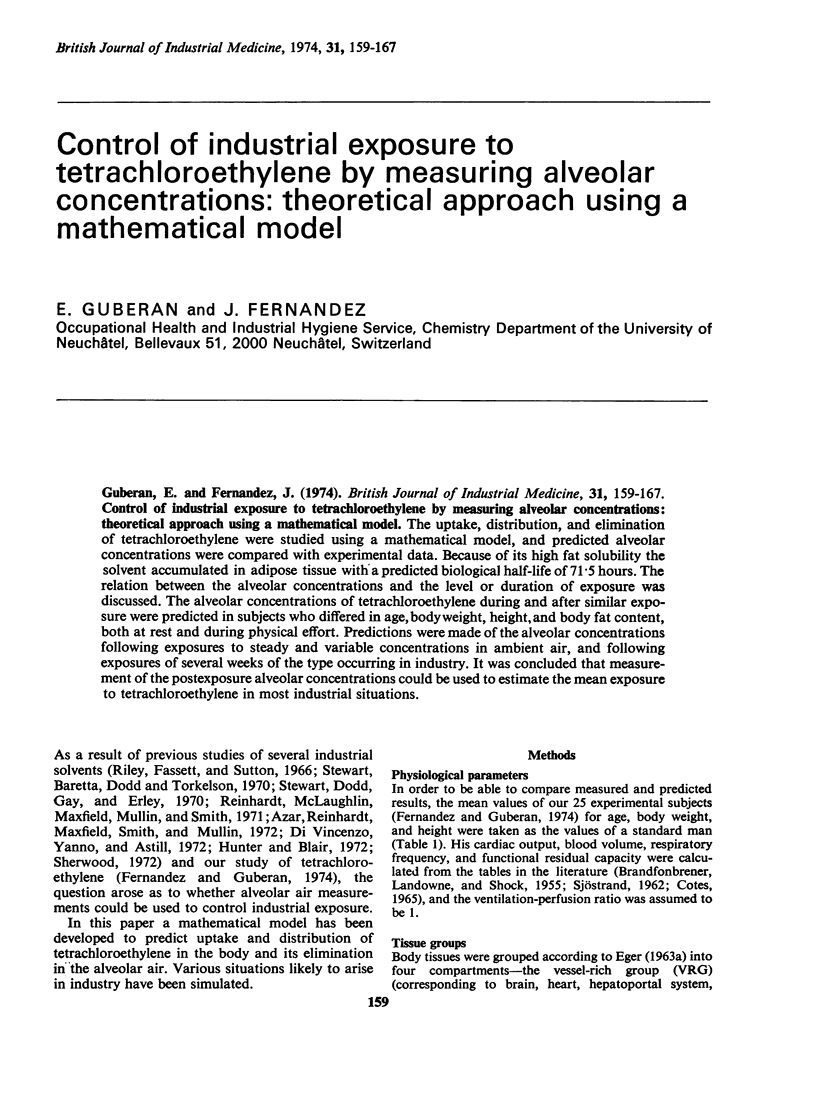
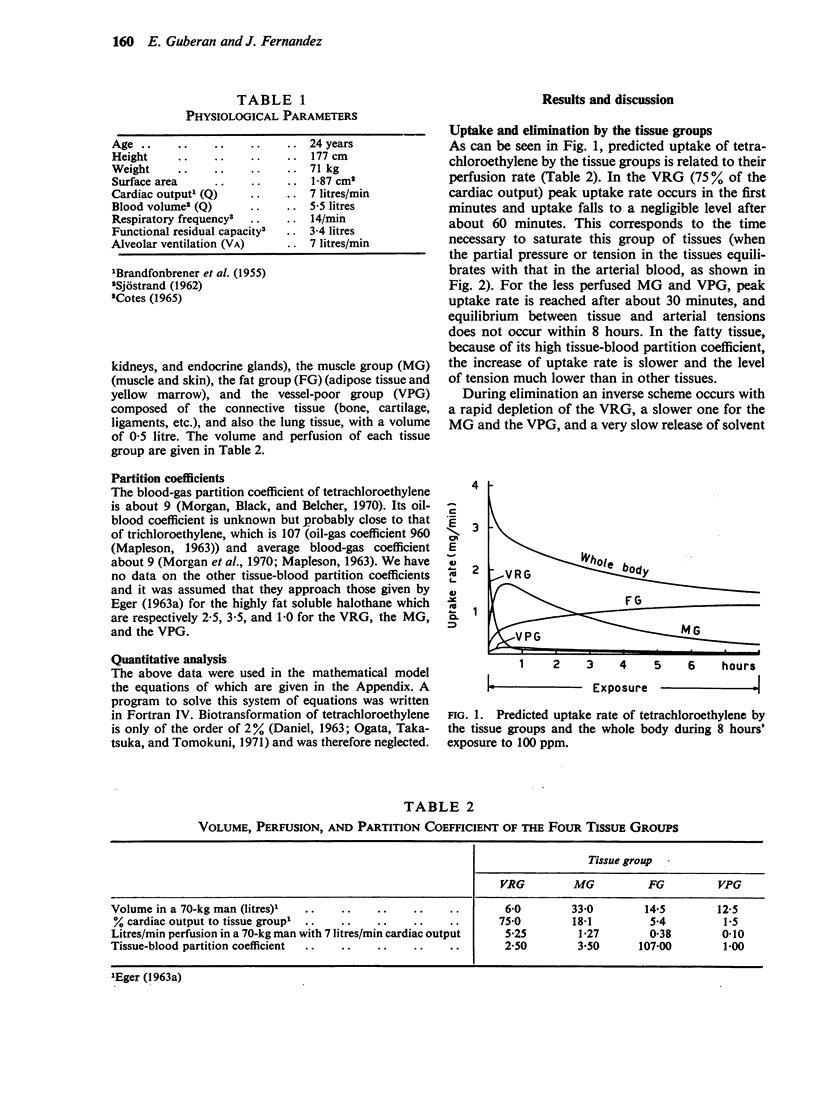
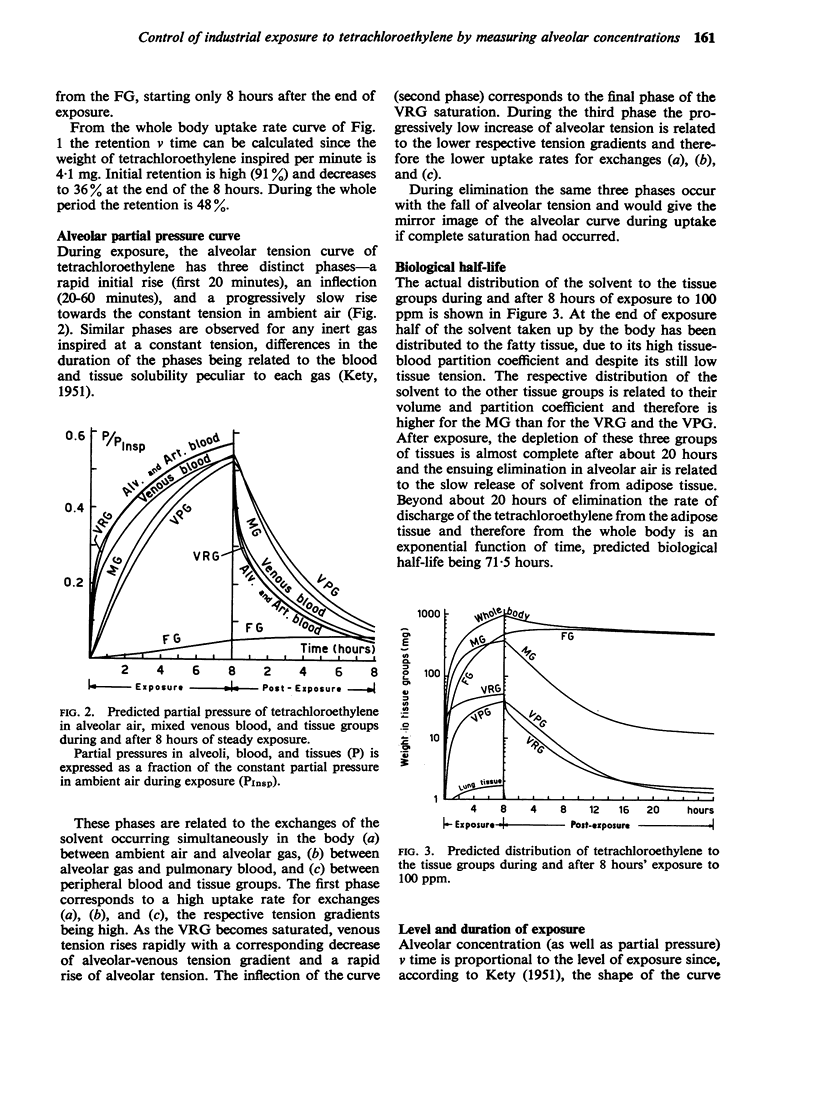

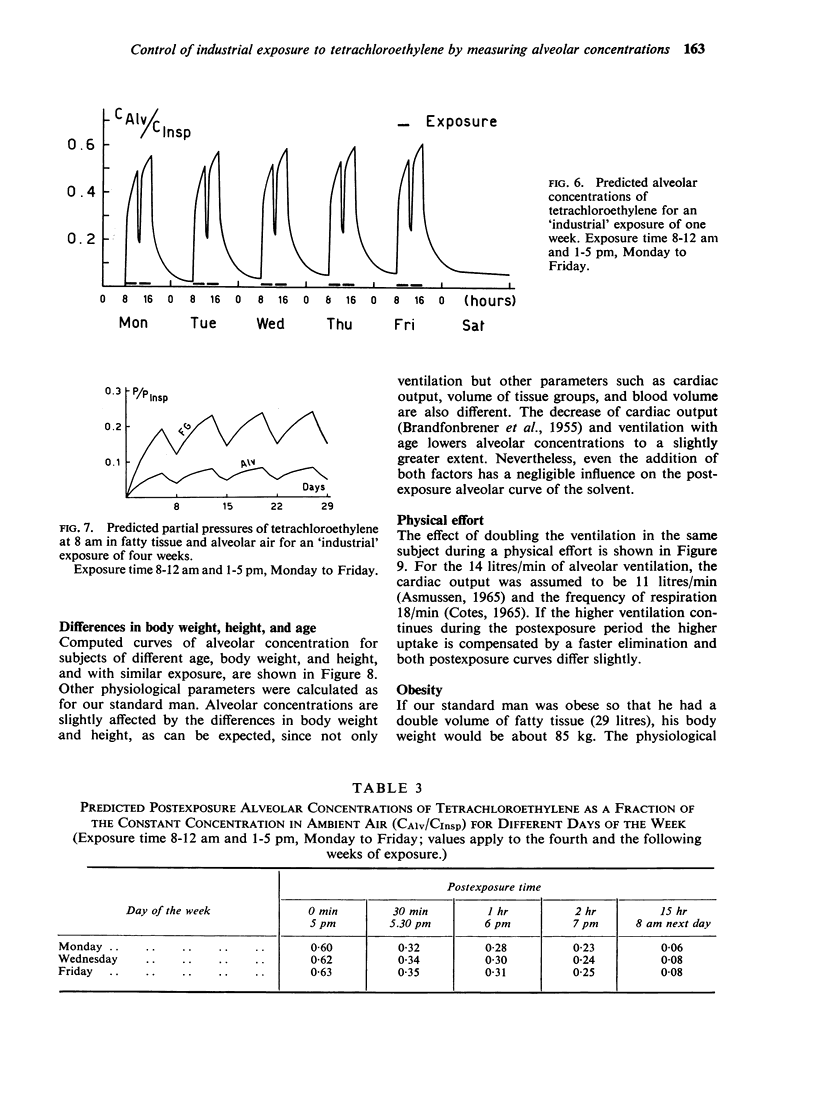
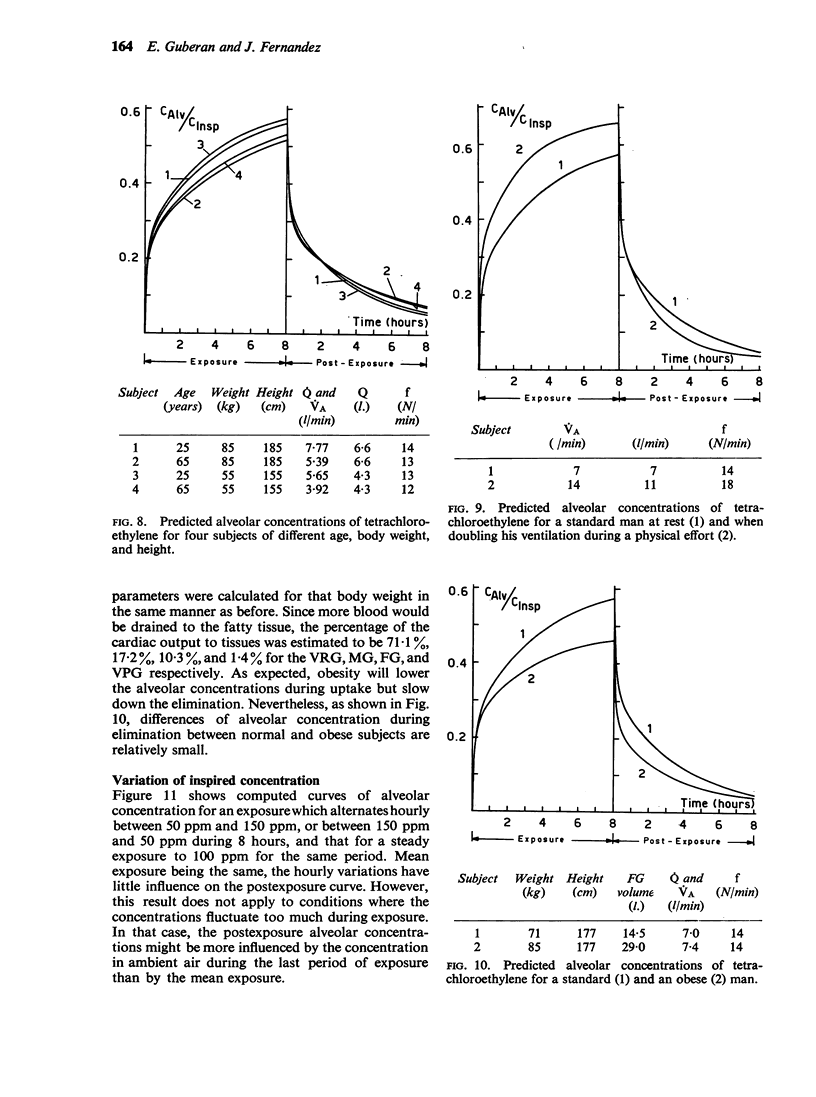
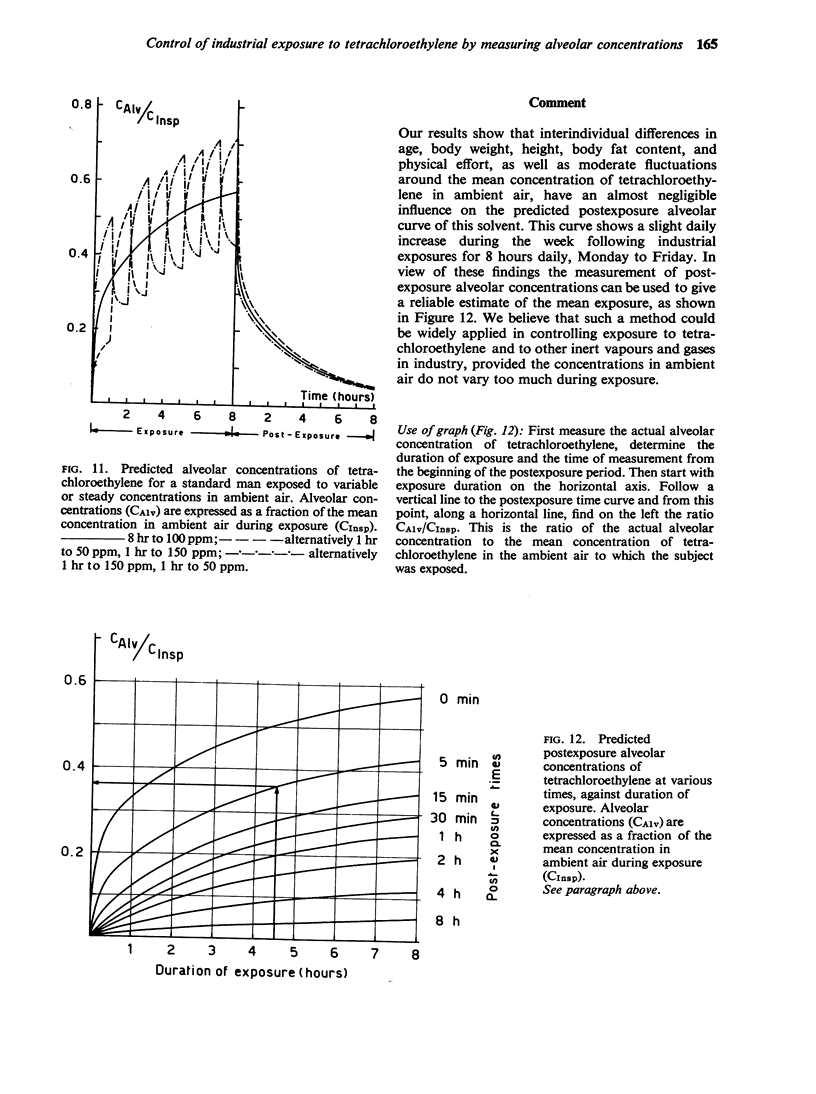
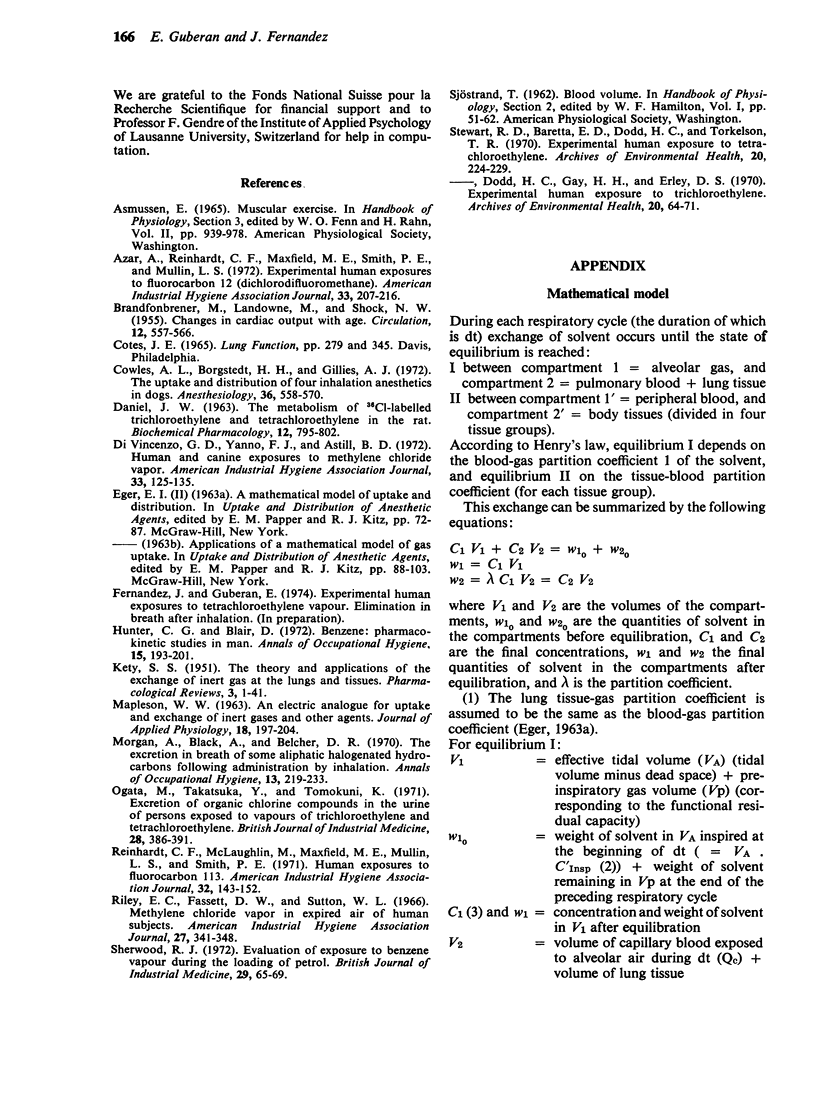
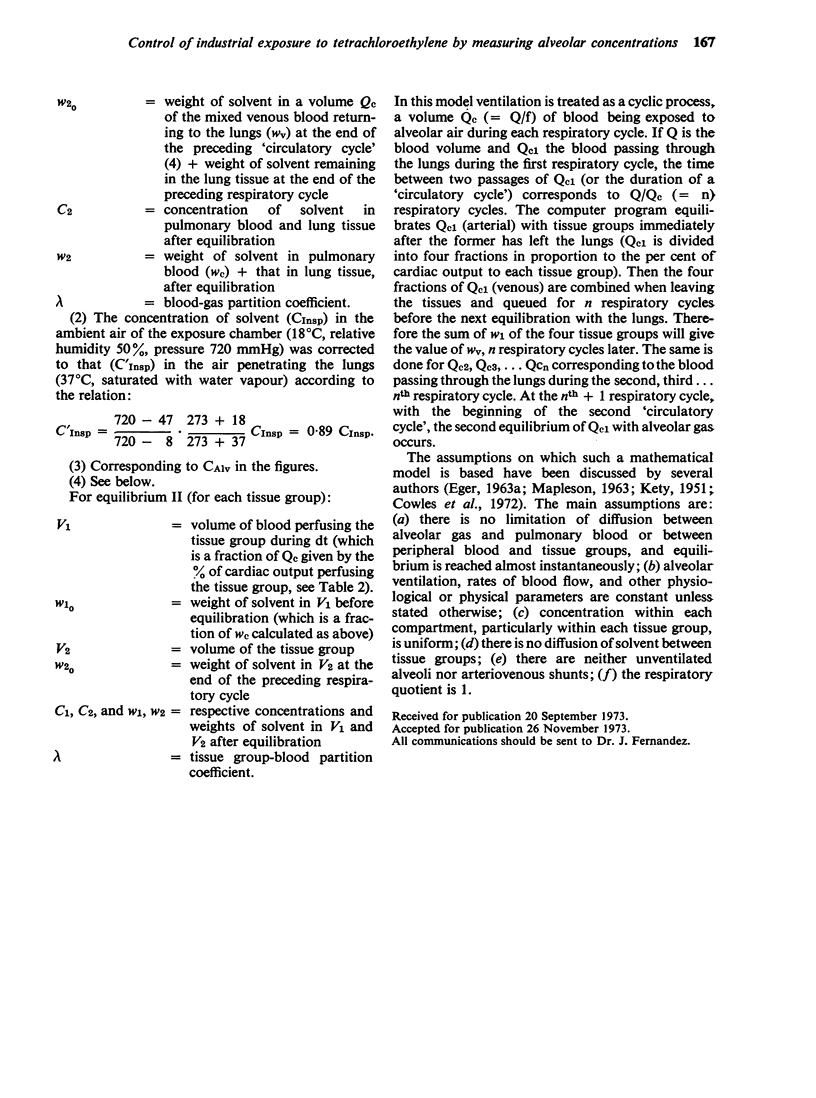
Selected References
These references are in PubMed. This may not be the complete list of references from this article.
- Azar A., Reinhardt C. F., Maxfield M. E., Smith P. E., Jr, Mullin L. S. Experimental human exposures to fluorocarbon 12 (dichlorodifluoromethane). Am Ind Hyg Assoc J. 1972 Apr;33(4):207–216. doi: 10.1080/0002889728506632. [DOI] [PubMed] [Google Scholar]
- BRANDFONBRENER M., LANDOWNE M., SHOCK N. W. Changes in cardiac output with age. Circulation. 1955 Oct;12(4):557–566. doi: 10.1161/01.cir.12.4.557. [DOI] [PubMed] [Google Scholar]
- Cowles A. L., Borgstedt H. H., Gillies A. J. The uptake and distribution of four inhalation anesthetics in dogs. Anesthesiology. 1972 Jun;36(6):558–570. doi: 10.1097/00000542-197206000-00009. [DOI] [PubMed] [Google Scholar]
- DANIEL J. W. THE METABOLISM OF 36C1-LABELLED TRICHLOROETHYLENE AND TETRACHLOROETHYLENE IN THE RAT. Biochem Pharmacol. 1963 Aug;12:795–802. doi: 10.1016/0006-2952(63)90109-6. [DOI] [PubMed] [Google Scholar]
- DiVincenzo G. D., Yanno F. J., Astill B. D. Human and canine exposures to methylene chloride vapor. Am Ind Hyg Assoc J. 1972 Mar;33(3):125–135. doi: 10.1080/0002889728506622. [DOI] [PubMed] [Google Scholar]
- Hunter C. G., Blair D. Benzene: pharmacokinetic studies in man. Ann Occup Hyg. 1972 Nov;15(2):193–201. doi: 10.1093/annhyg/15.2-4.193. [DOI] [PubMed] [Google Scholar]
- KETY S. S. The theory and applications of the exchange of inert gas at the lungs and tissues. Pharmacol Rev. 1951 Mar;3(1):1–41. [PubMed] [Google Scholar]
- MAPLESON W. W. An electric analogue for uptake and exchange of inert gases and other agents. J Appl Physiol. 1963 Jan;18:197–204. doi: 10.1152/jappl.1963.18.1.197. [DOI] [PubMed] [Google Scholar]
- Morgan A., Black A., Belcher D. R. The excretion in breath of some aliphatic halogenated hydrocarbons following administration by inhalation. Ann Occup Hyg. 1970 Dec;13(4):219–233. doi: 10.1093/annhyg/13.4.219. [DOI] [PubMed] [Google Scholar]
- Ogata M., Takatsuka Y., Tomokuni K. Excretion of organic chlorine compounds in the urine of persons exposed to vapours of trichloroethylene and tetrachloroethylene. Br J Ind Med. 1971 Oct;28(4):386–391. doi: 10.1136/oem.28.4.386. [DOI] [PMC free article] [PubMed] [Google Scholar]
- Reinhardt C. F., McLaughlin M., Maxfield M. E., Mullin L. S., Smith P. E., Jr Human exposures to fluorocarbon 113 (1,1,2-trichloro-1,2,2-trifluoroethane). Am Ind Hyg Assoc J. 1971 Mar;32(3):143–152. doi: 10.1080/0002889718506428. [DOI] [PubMed] [Google Scholar]
- Riley E. C., Fassett D. W., Sutton W. L. Methylene chloride vapor in expired air of human subjects. Am Ind Hyg Assoc J. 1966 Jul-Aug;27(4):341–348. doi: 10.1080/00028896609342839. [DOI] [PubMed] [Google Scholar]
- Sherwood R. J. Evaluation of exposure to benzene vapour during the loading of petrol. Br J Ind Med. 1972;29(1):65–69. doi: 10.1136/oem.29.1.65. [DOI] [PMC free article] [PubMed] [Google Scholar]
- Stewart R. D., Baretta E. D., Dodd H. C., Torkelson T. R. Experimental human exposure to tetrachloroethylene. Arch Environ Health. 1970 Feb;20(2):225–229. doi: 10.1080/00039896.1970.10665579. [DOI] [PubMed] [Google Scholar]
- Stewart R. D., Dodd H. C., Gay H. H., Erley D. S. Experimental human exposure to trichloroethylene. Arch Environ Health. 1970 Jan;20(1):64–71. doi: 10.1080/00039896.1970.10665543. [DOI] [PubMed] [Google Scholar]


